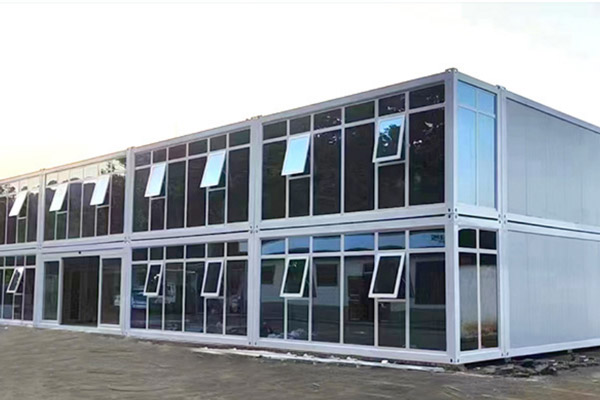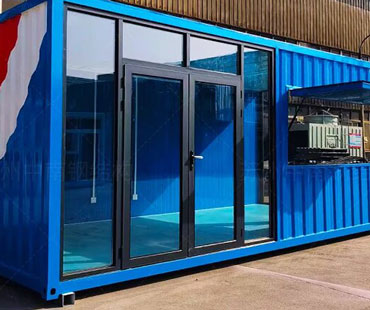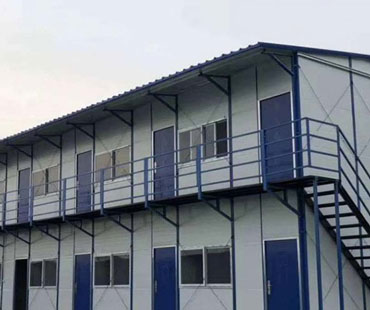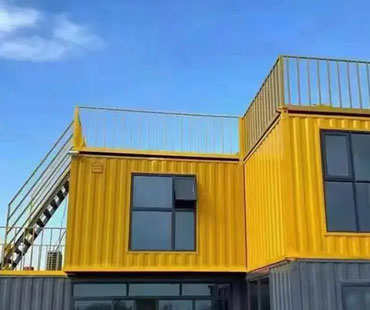As urbanization accelerates and housing demands soar in China, innovative solutions are urgently needed to address the challenges of affordability, sustainability, and rapid population growth. Among various alternatives, container homes have emerged as a popular and practical solution. These versatile structures, repurposed from shipping containers, offer an array of benefits that align well with the evolving needs of urban dwellers. This article explores the factors contributing to the rising popularity of container homes in China’s urban areas, their advantages, and the future potential of this housing trend.
China’s rapid urbanization over the past few decades has led to significant challenges in housing availability and affordability. With millions migrating to cities in search of better opportunities, the demand for affordable housing has surged. Traditional construction methods often fail to keep pace with this demand, resulting in skyrocketing property prices and a shortage of livable spaces. This crisis highlights the need for innovative housing solutions that can be deployed quickly and cost-effectively.
Container homes are built using repurposed shipping containers, which are durable, transportable, and relatively inexpensive. Originally designed to withstand harsh marine environments, these containers can be modified to create comfortable and functional living spaces. The basic structure of a shipping container provides a solid foundation, and with proper insulation, ventilation, and interior design, they can be transformed into stylish homes.

Factors Driving Popularity
1.Affordability
One of the most significant advantages of container homes is their cost-effectiveness. Compared to traditional housing, building with containers can be significantly cheaper. The reduced material costs, coupled with shorter construction times, make container homes an attractive option for budget-conscious individuals and families. In a country where housing prices are notoriously high, this affordability is a major selling point.
2.Speed of Construction
Container homes can be constructed much faster than conventional houses. A typical container home can be completed in a matter of weeks, while traditional construction can take several months or even years. This rapid construction process is particularly beneficial in urban areas, where the need for housing is urgent. Developers can quickly respond to market demands and provide much-needed shelter for residents.
3.Sustainability
As environmental concerns rise, sustainability has become a key factor in housing decisions. Container homes are an eco-friendly alternative to traditional building materials. Repurposing used shipping containers reduces waste and minimizes the carbon footprint associated with new construction. Furthermore, container homes can be designed to incorporate sustainable technologies, such as solar panels, green roofs, and rainwater harvesting systems, further enhancing their environmental benefits.
4.Flexibility and Customization
Container homes offer unparalleled flexibility in design and layout. They can be stacked, arranged in various configurations, or combined with other materials to create unique living spaces. This adaptability allows homeowners to customize their homes according to their needs and preferences. In densely populated urban areas, where space is often limited, the ability to create multi-story container structures is particularly appealing.
5.Urban Regeneration
Container homes can play a vital role in urban regeneration efforts. They can be easily installed on underutilized land, vacant lots, or former industrial sites, revitalizing neighborhoods that have fallen into disrepair. By transforming these spaces into vibrant communities, container homes contribute to the overall improvement of urban environments.
Case Studies in China
Several cities in China have already embraced the concept of container homes. For instance, in Shanghai, container villages have been established to provide affordable housing for migrant workers. These communities feature essential amenities and recreational spaces, fostering a sense of belonging among residents. Similarly, in Beijing, innovative container projects have been developed as temporary housing solutions during construction periods, demonstrating the versatility of this approach.
Challenges and Considerations
Despite the many advantages, container homes also face challenges. Regulatory hurdles, building codes, and zoning laws can complicate the approval process for container-based projects. Additionally, public perception and acceptance of container homes as a legitimate housing option may vary, influencing their popularity. Addressing these challenges will be crucial for the widespread adoption of container homes in China’s urban areas.
The Future of Container Homes in China
As urbanization continues and the need for affordable housing grows, container homes are poised to become an integral part of China’s housing landscape. With ongoing advancements in design, technology, and construction methods, the potential for container homes is vast. Policymakers, architects, and developers must work together to create a supportive environment for this innovative housing solution, ensuring that it can meet the needs of diverse communities.
Container homes represent a revolutionary approach to addressing the housing crisis in China’s urban areas. With their affordability, rapid construction, and sustainability, they offer a practical solution to the challenges posed by rapid urbanization. As interest in container homes continues to grow, this trend could significantly reshape the future of urban living in China, providing affordable and sustainable housing options for millions. By embracing the potentialof container homes, China can pave the way for a more sustainable and inclusive urban environment.


